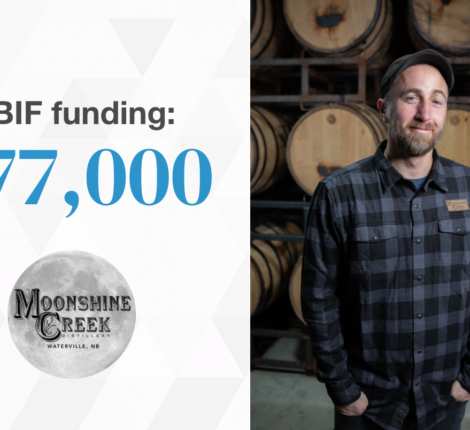- July 16, 2010
- Innovation Insights
- Comments : 0
New Super-thin Film Reflects Heat – NBIF Fast-tracks Project
The days of getting into a piping hot automobile in the middle of summer may one day be gone.
A specialist in materials science, Dr Pandurang Ashrit and his team have developed is a super efficient thin film that, when applied to a surface, and reaches 68 degrees Celsius, reflects away most of the sun’s heat radiation. When the temperature drops below 68°C, the film returns to its previous non-reflective state, allowing heat transmission once again. The film reflects heat-producing sunlight while staying completely transparent to the human eye.
The New Brunswick Innovation Foundation today announced an investment of $150,000 to accelerate the commercialization of an innovative material developed by the Thin Films and Photonics Research Group (GCMP) members at Université de Moncton. Led by physicist Dr Pandurang Ashrit, he and Drs Nait Ajjou and Alain Haché will pool their resources and expertise to do the work necessary to make it ready for application by three interested companies in three separate industries.
The most immediate application for the technology is expected to be for orbiting satellites. When exposed to the sun, satellites can reach an internal temperature as high as 150°C, which is detrimental to their components and instruments. As a result, satellite manufacturers must install bulky, mechanical systems to cool them down. If the system fails, the satellite can be seriously compromised or lost.
With the application of the super thin films achieved by Ashrit and his team, a satellite’s internal temperature will rise no further than a safe temperature of 68°C. At only 300 nanometers in thickness, Ashrit’s thin film will free up a considerable amount of space and weight currently used by cooling systems for other more mission-driven payloads. The research team has discussed the potential use of these thin films with scientists at the Canadian Space Agency and their possible commercial application.
The films fabricated by Ashrit and his team have also attracted the attention of night vision and infrared optics systems manufacturer Lambda Research Optics Europe (LROE) of Belgium, taking them into a realm of visualization that was achieved before with only very expensive and elaborate IR vision systems. Specifically, the incorporation of the film with infrared cameras is expected to simultaneously increase image resolution and lower manufacturing costs.
A third industrial application possibility for the innovative films is for high power laser radiation detection. In order to operate a high power laser cutter, like those used to cut steel, optic systems are required to observe or visualize the behavior of the laser. Today, the laser power used is limited by the ability of such imaging systems to “see” the laser without being destroyed in the process. Prof. Ashrit and his team are working in collaboration of Quebec-based Gentec to optimize their thin film for use in equipment that tests the power of lasers. The company has already tested the potential of these films for this application.
“This is a tremendous opportunity for the university and the province, and I’m pleased that NBIF can play this critical role in seeing Dr Ashrit’s innovation get transferred and commercialized by renowned companies like Gentec and Lambda Research Optics,” says NBIF President and CEO Calvin Milbury, “I am equally impressed by Drs Haché and Ajjou’s commitment to bring their expertise and pool some of their own research funding to see it through.” With the NBIF on board, Ashrit will be able to raise a total of $650,000 in funding from industry and other agencies.
Future applications of the technology will also be explored during this phase of the project, aimed at producing a unique self-sufficient smart window.
“In order to produce the most effective smart window, we need to get the temperature at which the film turns reflective down between 20 and 30 degrees,” says Ashrit, “we can do this by introducing other elements to the existing film, and by making the film even thinner, that with additional research, we believe is just a matter of time.”
Ashrit’s film reflects heat-producing sunlight while staying completely transparent.


